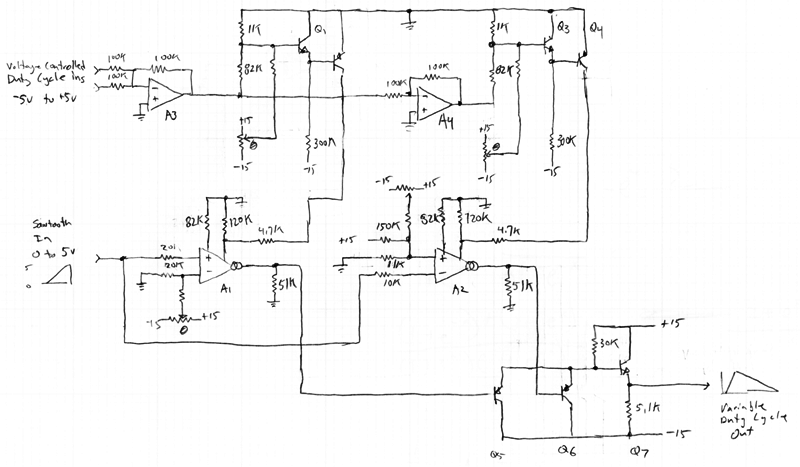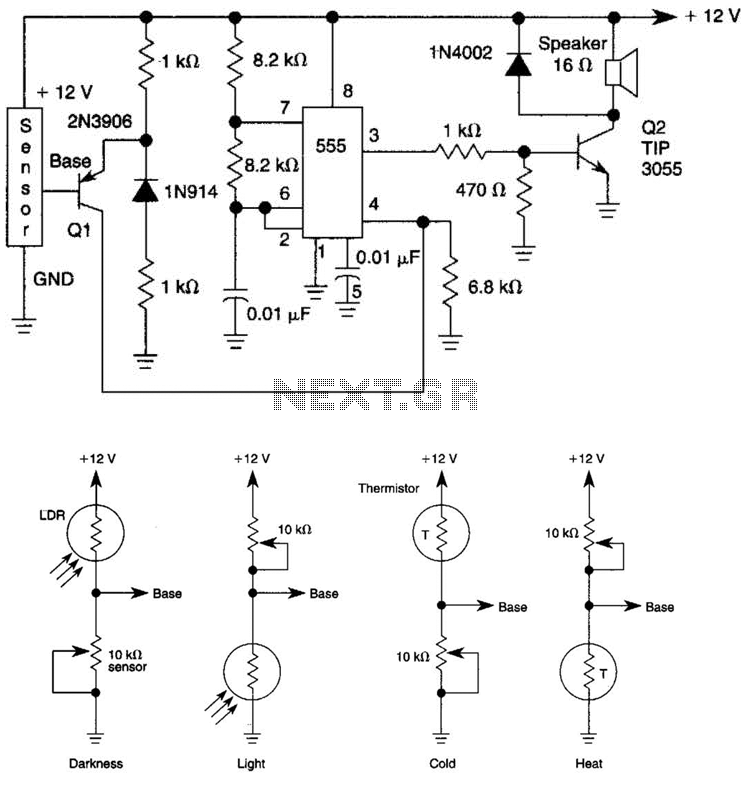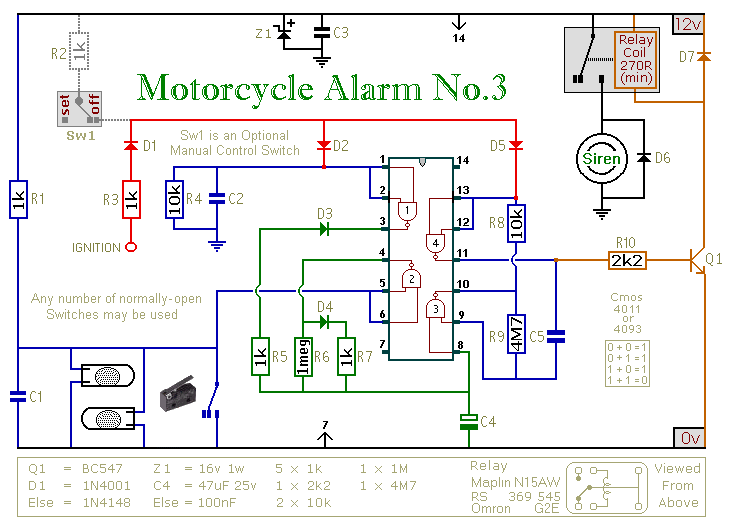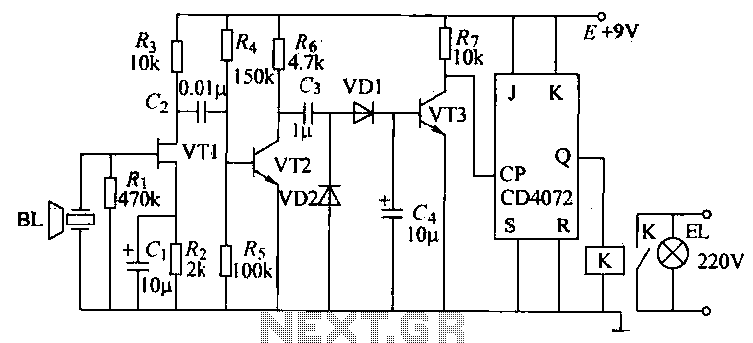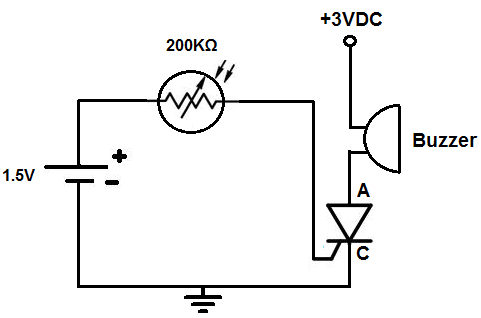
4 digit alarm control keypad
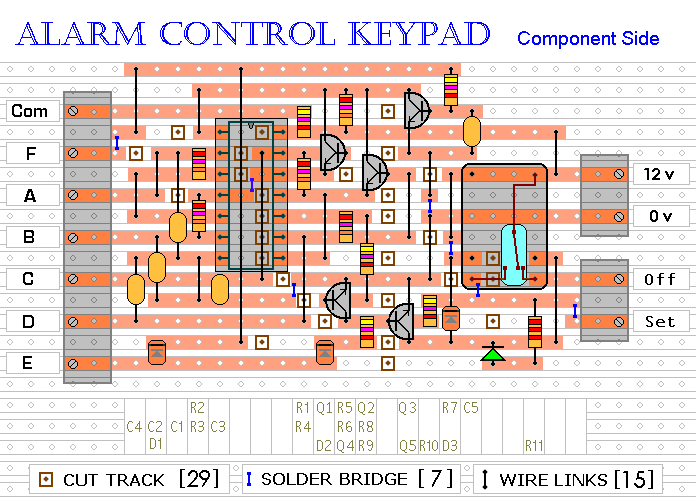
This keypad is designed for use with a modular burglar alarm system but can also be applied in various other applications. Pressing a single key will activate the relay, while entering a four-digit code of your choice will deactivate it.
The keypad operates as a user interface for security systems, allowing for secure access control. It typically consists of a matrix of keys arranged in rows and columns, which enables the detection of key presses through a scanning method. When a key is pressed, the corresponding row and column are connected, sending a signal to the control circuit.
The relay, which is typically a mechanical or solid-state switch, is used to control the power supply to other components within the burglar alarm system. When a key is pressed, the control circuit energizes the relay, allowing current to flow through it. This action may trigger an alarm, activate a siren, or send a notification to a monitoring system, depending on the specific configuration of the alarm system.
To enhance security, the keypad requires a four-digit code for deactivation. This code can be programmed by the user, allowing for customization and flexibility in operation. Upon entering the correct code, the control circuit sends a signal to de-energize the relay, thus disabling the alarm system or other connected devices.
For additional functionality, the keypad may incorporate features such as backlighting for visibility in low-light conditions, audible feedback for key presses, and tamper detection to prevent unauthorized access. The design can also include a microcontroller that manages the input from the keypad, processes the entered code, and controls the relay accordingly.
In conclusion, this keypad serves as a critical component in modular burglar alarm systems and other applications, providing an effective means of user interaction and control over security measures. Its straightforward operation, combined with the ability to customize access codes, ensures both security and convenience in various settings.This Keypad is suitable for the Modular Burglar Alarm. However, it has other applications. Pressing a single key will energize the relay. Entering the Four-Digit code of your choice will de-energize it.. 🔗 External reference
The keypad operates as a user interface for security systems, allowing for secure access control. It typically consists of a matrix of keys arranged in rows and columns, which enables the detection of key presses through a scanning method. When a key is pressed, the corresponding row and column are connected, sending a signal to the control circuit.
The relay, which is typically a mechanical or solid-state switch, is used to control the power supply to other components within the burglar alarm system. When a key is pressed, the control circuit energizes the relay, allowing current to flow through it. This action may trigger an alarm, activate a siren, or send a notification to a monitoring system, depending on the specific configuration of the alarm system.
To enhance security, the keypad requires a four-digit code for deactivation. This code can be programmed by the user, allowing for customization and flexibility in operation. Upon entering the correct code, the control circuit sends a signal to de-energize the relay, thus disabling the alarm system or other connected devices.
For additional functionality, the keypad may incorporate features such as backlighting for visibility in low-light conditions, audible feedback for key presses, and tamper detection to prevent unauthorized access. The design can also include a microcontroller that manages the input from the keypad, processes the entered code, and controls the relay accordingly.
In conclusion, this keypad serves as a critical component in modular burglar alarm systems and other applications, providing an effective means of user interaction and control over security measures. Its straightforward operation, combined with the ability to customize access codes, ensures both security and convenience in various settings.This Keypad is suitable for the Modular Burglar Alarm. However, it has other applications. Pressing a single key will energize the relay. Entering the Four-Digit code of your choice will de-energize it.. 🔗 External reference
